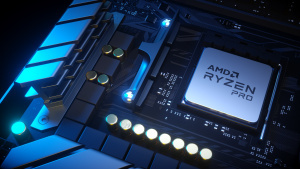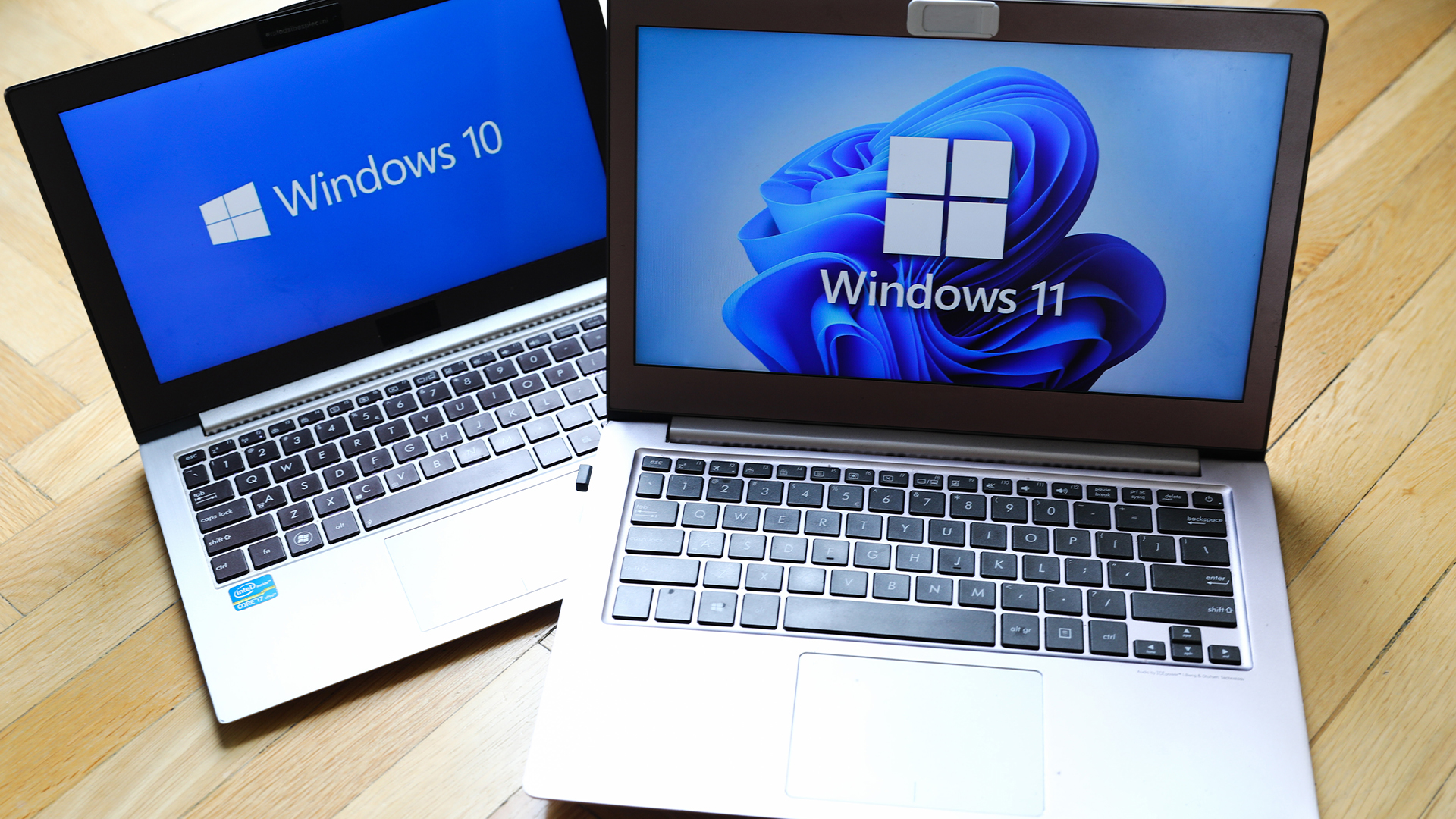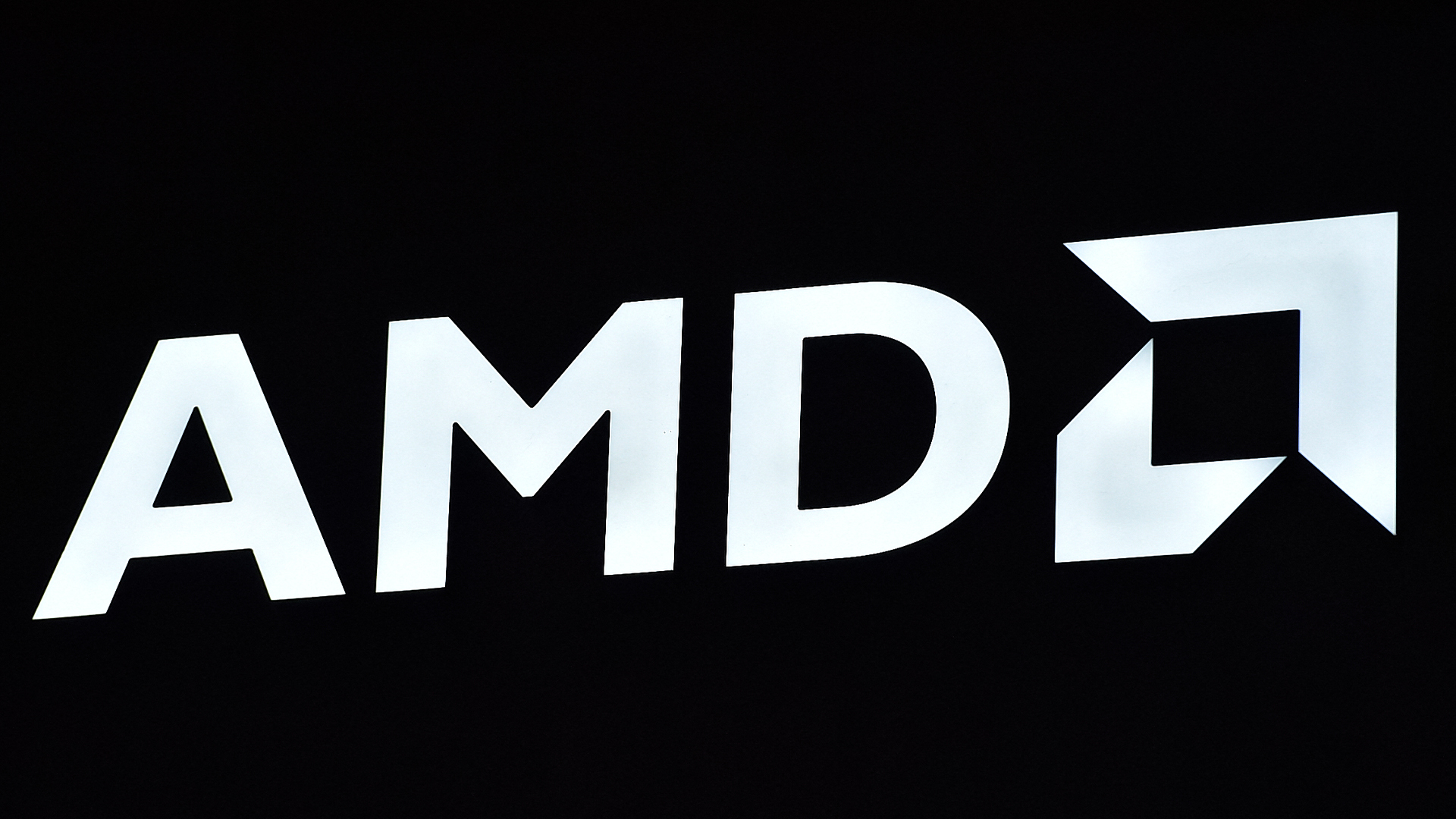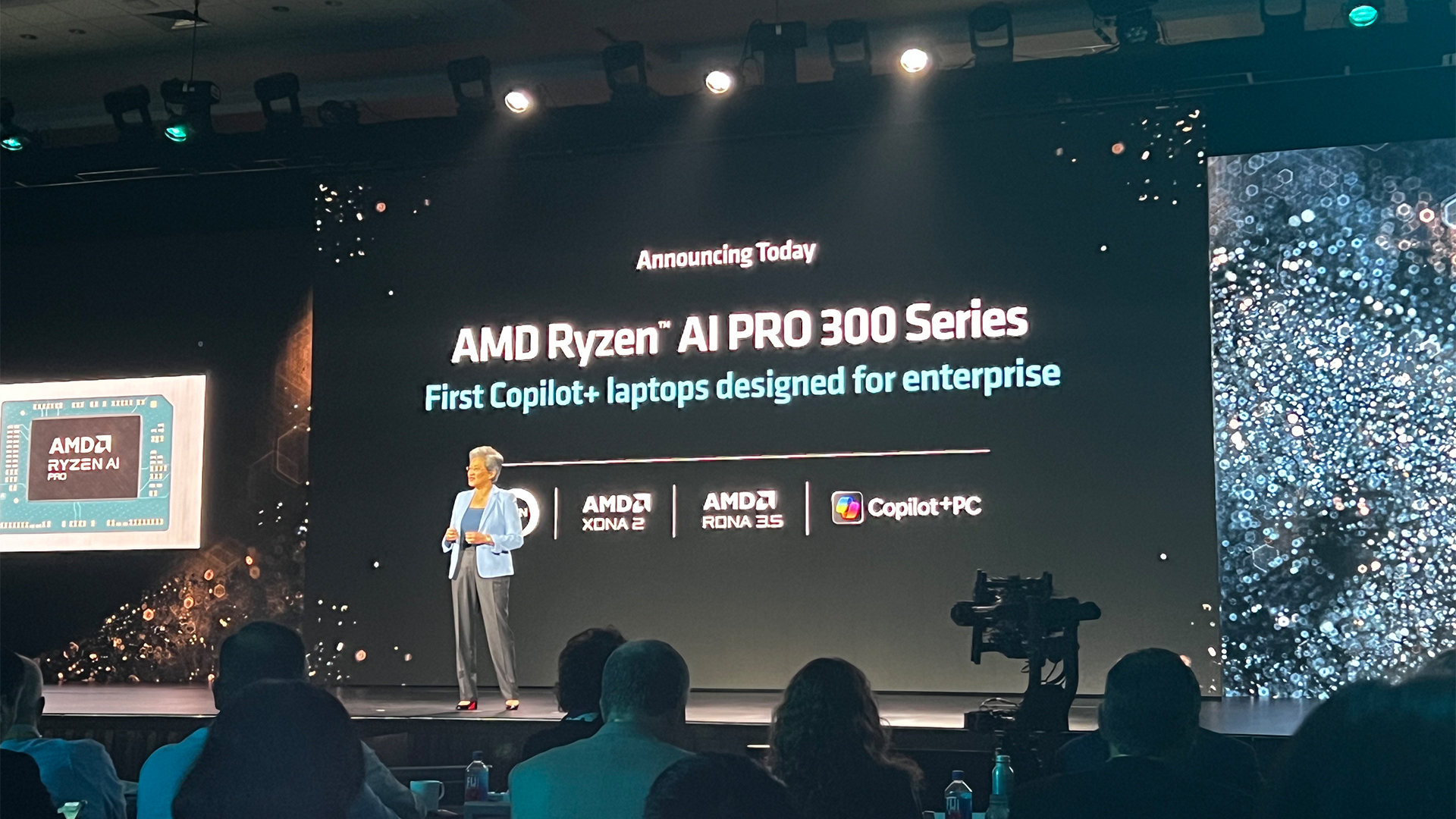AMD packs integrated graphics into Ryzen 4000 desktop chips
New APUs combine Zen 2 architecture with Radeon graphics to take on Intel


AMD has revealed a new suite of Ryzen 4000-series processors for business and consumer desktops including integrated Radeon graphics, with a view to challenging Intel’s dominance in the pre-built desktop market.
This latest product announcement comes just a week after AMD unveiled new Threadripper Pro CPUs to compete with Intel’s Xeon line.
The new entries in the Ryzen family - codenamed ‘Renoir’ - are built on AMD’s Zen 2 architecture using its 7nm process, and will be compatible with the AM4 socket. The 4000-series are APUs (short for ‘Accelerated Processing Unit’) which is AMD’s term for processors combining a CPU with an on-chip GPU. These represent the first Zen 2 desktop APUs, following the launch of mobile Zen 2 APUs at this year’s CES.
PC Specialist Onyx 994RG review: So long, Intel A deep-dive into AMD's Zen 2 architecture and next-gen EPYC chips AMD Ryzen Pro CPU launches with heavy-hitting PC partnerships
AMD is touting big performance gains both over the previous generation of Ryzen APUs and over Intel’s equivalent 9th-gen components. An AMD spokesperson said that the company has not been able to benchmark the new chips against the latest 10th-gen Intel processors, but said that it still expects to see a noticeable difference in its favour versus 10th-gen.
The company is launching 24 new chips in total, split between its consumer and commercial Ryzen Pro product lines. Both commercial and consumer ranges feature Ryzen 7, Ryzen 5 and Ryzen 3 parts, with each category receiving two chips - one with a 65W TDP and one with a 35W TDP. Each range also gets three new Athlon chips for more entry-level systems.
AMD Ryzen Pro 4000-series specs
| Name | Cores/threads | Frequency (base/boost) | L2+L3 cache | Graphics cores | Graphics frequency | TDP |
| AMD Ryzen 7 Pro 4750G | 8/16 | 3.6GHz / up to 4.4GHz | 12MB | 8 | 2,100MHz | 65W |
| AMD Ryzen 5 Pro 4650G | 6/12 | 3.7GHz / up to 4.2GHz | 11MB | 7 | 1,900MHz | 65W |
| AMD Ryzen 3 Pro 4350G | 4/8 | 3.8GHz / up to 4GHz | 6MB | 6 | 1,700MHz | 65W |
| AMD Ryzen 7 Pro 4750GE | 8/16 | 3.1GHz / up to 4.3GHz | 12MB | 8 | 2,000MHz | 35W |
| AMD Ryzen 5 Pro 4650GE | 6/12 | 3.3GHz / up to 4.2GHz | 11MB | 7 | 1,900MHz | 35W |
| AMD Ryzen 3 Pro 4350GE | 4/8 | 3.5GHz / up to 4GHz | 6MB | 6 | 1,700MHz | 35W |
| AMD Athlon Gold Pro 3150G | 4/4 | 3.5GHz / up to 3.9GHz | 6MB | 3 | 1,100MHz | 65W |
| AMD Athlon Gold Pro 3150GE | 4/4 | 3.3GHz / up to 3.8GHz | 6MB | 3 | 1,100MHz | 35W |
| AMD Athlon Silver Pro 3125GE | 2/4 | 3.4GHz / up to 3.4GHz | 5MB | 3 | 1,100MHz | 35W |
AMD Ryzen 4000-series specs
| Name | Cores/threads | Frequency (boost/base) | L2+L3 cache | Graphics cores | Graphics frequency | TDP |
| AMD Ryzen 7 4700G | 8/16 | 3.6GHz / up to 4.4GHz | 12MB | 8 | 2,100MHz | 65W |
| AMD Ryzen 5 4600G | 6/12 | 3.7GHz / up to 4.2GHz | 11MB | 7 | 1,900MHz | 65W |
| AMD Ryzen 3 4300G | 4/8 | 3.8GHz / up to 4GHz | 6MB | 6 | 1,700MHz | 65W |
| AMD Ryzen 7 4700GE | 8/16 | 3.1GHz / up to 4.3GHz | 12MB | 8 | 2,000MHz | 35W |
| AMD Ryzen 5 4600GE | 6/12 | 3.3GHz / up to 4.2GHz | 11MB | 7 | 1,900MHz | 35W |
| AMD Ryzen 3 4300GE | 4/8 | 3.5GHz / up to 4GHz | 6MB | 6 | 1,700MHz | 35W |
AMD is claiming that the top-end Ryzen 7 Pro 4750G offers 31% faster performance than the competing Intel chip, as well as more than 50% better multi-threaded performance than its own previous-generation Ryzen 5 Pro 3400G processor, while the mid-range Ryzen 5 Pro 4650G is supposedly around 30% faster on average at operating the Microsoft Office suite. The chips will also support up to three independent displays.
“[The Ryzen 7 Pro 4750G can go] head-to-head against a Core i7-9700; frankly, [it’s] a competing point that we just have not had, historically, in our commercial desktop business,” said Matt Unangst, director of AMD’s commercial client business. “We’re excited to show that we deliver leadership capability at the top of the stack.”
Sign up today and you will receive a free copy of our Future Focus 2025 report - the leading guidance on AI, cybersecurity and other IT challenges as per 700+ senior executives
In addition to performance improvements, the company is touting lower power consumption, greater thermal efficiency and near-silent operations, and has specifically optimised the chips for small-form-factor devices, citing OEMs’ growing demand for chips to fit low-profile and all-in-one devices.
Along with the TCO benefits offered by a lower power consumption, the professional range also includes a number of exclusive security-focused technologies, such as AMD Memory Guard, which offer full memory encryption, and AMD Pro Manageability, which gives IT admins more control over imaging and deployment and is fully compatible with Microsoft Endpoint Manager.
These chips will not be available for purchase directly; instead, they will be exclusively reserved for system builders and OEMs constructing pre-built desktops, although AMD has intimated that standalone desktop APUs for individual customers are also coming as part of its future roadmap.
AMD did not specify which manufacturers will be releasing desktop designs featuring the new chips, but did drop a few hints as to a few likely suspects.
“We have current-gen commercial desktops with both HP and Lenovo,” said Unangst. "We expect to refresh many of those platforms and continue to expand our portfolio going forward.”
Adam Shepherd has been a technology journalist since 2015, covering everything from cloud storage and security, to smartphones and servers. Over the course of his career, he’s seen the spread of 5G, the growing ubiquity of wireless devices, and the start of the connected revolution. He’s also been to more trade shows and technology conferences than he cares to count.
Adam is an avid follower of the latest hardware innovations, and he is never happier than when tinkering with complex network configurations, or exploring a new Linux distro. He was also previously a co-host on the ITPro Podcast, where he was often found ranting about his love of strange gadgets, his disdain for Windows Mobile, and everything in between.
You can find Adam tweeting about enterprise technology (or more often bad jokes) @AdamShepherUK.
-
 I couldn’t escape the iPhone 17 Pro this year – and it’s about time we redefined business phones
I couldn’t escape the iPhone 17 Pro this year – and it’s about time we redefined business phonesOpinion ITPro is back on smartphone reviews, as they grow more and more intertwined with our work-life balance
-
 When everything connects, everything’s at risk
When everything connects, everything’s at riskIndustry Insights Growing IoT complexity demands dynamic, automated security for visibility, compliance, and resilience
-
 Framework Desktop review: Modular design and ferocious AMD performance
Framework Desktop review: Modular design and ferocious AMD performanceReviews AMD's Ryzen Max CPUs debut in Framework's impressive modular self-build small-form desktop PC
-
 AMD chief exec Lisa Su says its new Helios AI rack is a 'game changer' for enterprises ramping up inference – here's why
AMD chief exec Lisa Su says its new Helios AI rack is a 'game changer' for enterprises ramping up inference – here's whyNews The integrated hardware offering will feature upcoming AMD chips and networking cards
-
 AMD Advancing AI 2025: All the latest news and updates from San Jose
AMD Advancing AI 2025: All the latest news and updates from San JoseFollow all the news and updates live from AMD's latest Advancing AI conference
-
 What enterprises need to be Windows 11 ready
What enterprises need to be Windows 11 readySupported Hardware purchasing will play a key role in delivering success during the Windows 11 migration rush
-
 Why the CPU you chose is the key to Windows 11
Why the CPU you chose is the key to Windows 11Supported The end of Windows 10 is on the horizon – it’s time to upgrade to an fTPM-protected processor
-
 AMD and Intel’s new x86 advisory group looks to tackle Arm, but will it succeed?
AMD and Intel’s new x86 advisory group looks to tackle Arm, but will it succeed?News The pair will look to make x86 CPU architecture more interoperable
-
 AMD’s patient roadmap has become a highway to success
AMD’s patient roadmap has become a highway to successAnalysis While everyone was focused on Nvidia’s meteoric rise, AMD was preparing the hardware needed to take the fight to its long-time competitor
-
 AMD just made a big statement in the AI PC race with its Ryzen AI Pro 300 series processors
AMD just made a big statement in the AI PC race with its Ryzen AI Pro 300 series processorsNews With all eyes focused on the AI PC craze, AMD looks to one-up the competition
